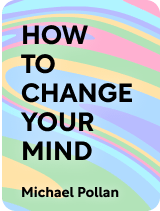

This article is an excerpt from the Shortform book guide to "How to Change Your Mind" by Michael Pollan. Shortform has the world's best summaries and analyses of books you should be reading.
Like this article? Sign up for a free trial here.
How is psychedelic research conducted? Is testing psychedelics on human subjects safe?
Research has to be done in order to understand the full effect of psychedelics on the brain. To make it as safe as possible, the John Hopkins Center has developed several guidelines to limit the risk to subjects.
Discover how psychedelic research is conducted and the conclusions it’s drawn.
How Is This Research Conducted?
In reviewing the large volume of psychedelic research from the 1950s through today, Pollan notes that there have been a number of conflicting conclusions—some studies have had significantly higher success rates than others. He suggests that one factor contributing to disparities in results is the difference in “set and setting,” a crucial factor in psychedelic experimentation. “Set” refers to the mindset of the person at the time they take the psychedelic, and “setting” to the space and context within which the drug is taken. Leary stressed the vital importance of these factors for the outcome of the experience, and they remain central to the approach to psychedelics in research today.
(Shortform note: A long-recognized important element of set and setting in psychedelic therapy is music. Using principles from music psychology, University of Copenhagen researchers have developed their own playlist specifically designed to facilitate psychedelic therapy. They used four criteria in the selection of musical pieces: 1. An intensity appropriate to the psychedelic experience, 2. Culturally diverse styles and genres, 3. Any vocals should be in unfamiliar languages, and 4. No obvious religious references. The playlist—The Copenhagen Music Program for Psilocybin—is available on Spotify.)
Pollan describes how these studies are conducted in clinical settings. He says participants are put in a comfortable room at the research center with a guide who is trained to direct the subject’s experience. The rooms are generally created to be pleasant, tranquil spaces, with soothing music playing. Guides may give the subject a description beforehand of what they’re likely to experience, and the subjects are always asked to relax and allow the experience to unfold. Having a guide there to remind the subject of this mitigates the risk of them becoming too fearful and going into a negative trip.
According to Pollan, subjects may be primed to expect to feel like they may be dying, dissolving, or losing themselves, and reassured that they shouldn’t be afraid because they will come back to reality. They should just let it happen, in order to get the fullest experience. They may also be told to expect mystical experiences and to fully embrace them.
Pollan points out that some have challenged the scientific nature of these methods, pointing out that this priming creates an expectancy effect—in other words, the researchers telling subjects what to expect necessarily influences what they’ll experience. Pollan explains, however, that most researchers dismiss this concern, because (a) it’s unavoidable—they have to do this for the safety of the subjects, to ensure that they don’t have “bad trips,” and (b) this research is specifically about how psychedelics might be used to bring about healing and/or these mystical experiences, so specifically trying to induce that is within the objectives of the study.
Guidelines for Clinical Psychedelic Trials
The Johns Hopkins Center for Psychedelic and Consciousness Research, launched in 2019, is the first research center of its kind in the US and the largest in the world. This center is at the forefront of current psychedelic research, and it received its first federal grant from the National Institutes of Health in 2021—the first federal grant for this kind of research awarded in more than 50 years.
The Johns Hopkins team has developed a set of guidelines for safety in testing psychedelics on human subjects. This guide addresses several potential measures of risk associated with psychedelics:
- Physiological toxicity: There is no evidence for neurotoxic effects from LSD, psilocybin, or mescaline. MDMA, which is in a different class of drug, has the potential for some neurotoxic effects at high doses, but at therapeutic doses is considered safe.
- Abuse and dependence: Psychedelics have low potential for addiction and are considered safe to administer without risk of dependency.
- Psychological distress and dangerous behavior during the experience: The greatest risk associated with psychedelics is the risk of a “bad trip”—an experience characterized by acute psychological distress, anxiety, fear, and paranoia. This distress can potentially lead to dangerous behaviors, and although this is rare, researchers must be prepared to mitigate this risk and ensure the safety of the subject.
- Prolonged psychosis: In extremely rare cases, a psychedelic session could trigger a state of psychosis lasting for days or even months. This only happens in approximately 1.8 out of every 1,000 cases and has been associated with prior serious mental health conditions. For this reason, people with certain conditions, such as schizophrenia and bipolar I or II disorder, are now excluded from participation in psychedelic trials.
- Lasting perceptual abnormalities: Sometimes referred to as “flashbacks,” some subjects can experience a degree of altered perception after the psychedelic session is over. Recreational users of psychedelics report having these experiences more often than research subjects, and many report them as mild and not unpleasant. Research subjects should be made aware of the possibility, although with careful screening of subjects, it’s rare.

———End of Preview———
Like what you just read? Read the rest of the world's best book summary and analysis of Michael Pollan's "How to Change Your Mind" at Shortform.
Here's what you'll find in our full How to Change Your Mind summary:
- The long and complex history of humans' relationship with psychedelics
- Psychedelics' potential use for mental health treatment today
- Why there are so many cultural and legal issues surrounding psychedelics






